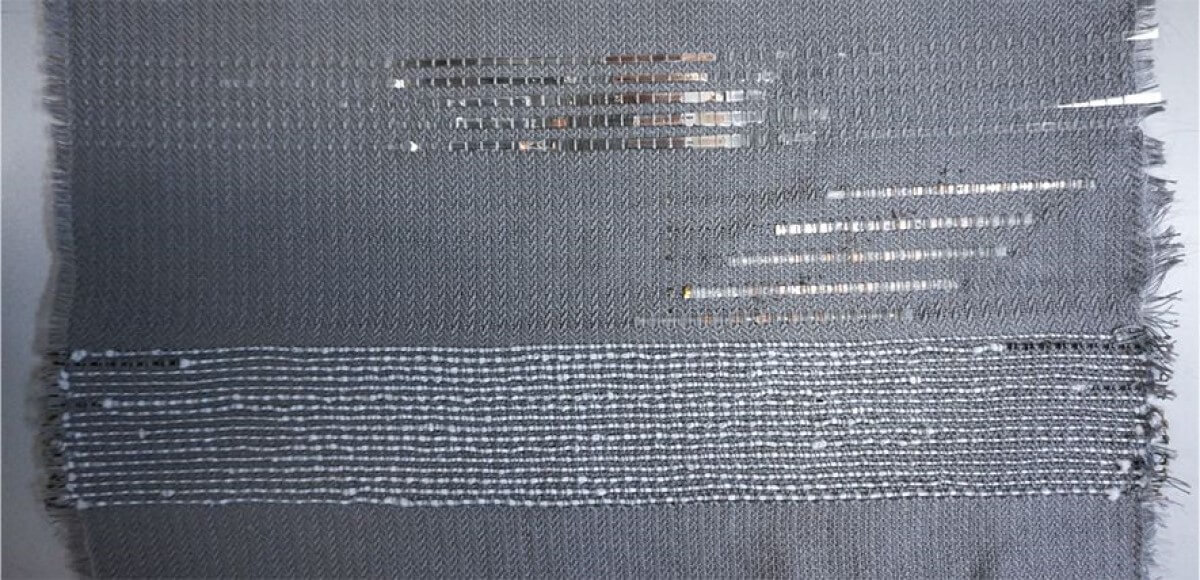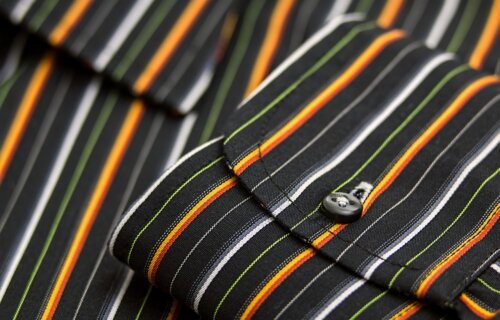CAMBRIDGE, United Kingdom — There is a new way to create sustainable and affordable “smart” fabrics that adapt to their environment, according to researchers. An international team, led by scientists at the University of Cambridge, combined electronic, optoelectronic, sensing, and energy fiber components to develop smart fabrics that can sense and respond to their external environment.
They developed these materials using existing loom techniques for clothing production, significantly reducing the cost of creating smart fabrics. The authors of the study believe their research shows how smart textiles could serve as cost-effective alternatives in various industries, including automotive, electronics, fashion, and construction.
Until now, the functionality, dimensions, and shapes of smart textiles have been significantly limited due to expensive manufacturing processes that require substantial investments. Although the research team previously demonstrated that large woven displays could be created using specialized manual laboratory equipment, other smart textiles require microelectronic fabrication facilities, which are costly and generate significant waste.
However, the researchers found that flexible displays and smart fabrics could be produced more affordably by weaving electronic, optoelectronic, sensing, and energy fiber components on the same industrial looms used to manufacture conventional textiles.

The study reveals that if fibers used in smart textiles were coated with materials that could withstand stretching, they could be used in traditional manufacturing techniques.
“We could make these textiles in specialized microelectronics facilities, but these require billions of pounds of investment. In addition, manufacturing smart textiles in this way is highly limited, since everything has to be made on the same rigid wafers used to make integrated circuits, so the maximum size we can get is about 30 centimeters in diameter,” explains Dr. Sanghyo Lee, the study’s first author from Cambridge’s Department of Engineering, in a university release.
Researchers fabricated multiple types of fiber devices, including energy storage devices, light-emitting diodes, and transistors, and combined them with conventional fibers, either synthetic or natural, to create smart textiles via automated weaving. These fiber devices were interconnected by an automated laser welding method using an “electrically conductive adhesive.” All processes were optimized to minimize damage to electronic components, making the smart textiles durable enough to withstand the stretching of an industrial weaving machine.
“Incorporating the same durability as normal fabrics into smart textiles has been a challenge due to their lack of practicality,” adds co-author Dr. Luigi Occhipinti, also from the Department of Engineering.
The research team collaborated with textile manufacturers to produce test patches of smart textiles about 50 cm by 50 cm in size. However, they believe this could be scaled up to larger dimensions and produced in higher volumes.
“When we introduce the smart fibers to the process, the result is basically an electronic system that is manufactured exactly the same way other textiles are manufactured,” explains Dr. Lee.
You might also be interested in:
- Best Fashion Trends Of All Time: Top 5 Timeless Styles Most Recommended By Experts
- Best Athletic Clothing Brands: Top 5 Companies Most Recommended By Fitness Experts
- Best Shapewear: Top 5 Brands Most Recommended By Fashion Experts
The researchers conclude that while further optimization of their methods is necessary, they have demonstrated how it could be possible to create large, flexible displays and monitors on industrial looms, making them far cheaper to produce.
“Our approach is quite unique. The flexibility of these textiles is amazing; not just in terms of their mechanical flexibility, but the flexibility of the approach, and to deploy sustainable and eco-friendly electronics manufacturing platforms that contribute to the reduction of carbon emissions and enable real applications of smart textiles in buildings, car interiors, and clothing,” concludes Dr. Occhipinti.
The research was supported in part by the European Union and UK Research and Innovation and is published in the journal Science Advances.
South West News Service writer James Gamble contributed to this report.

